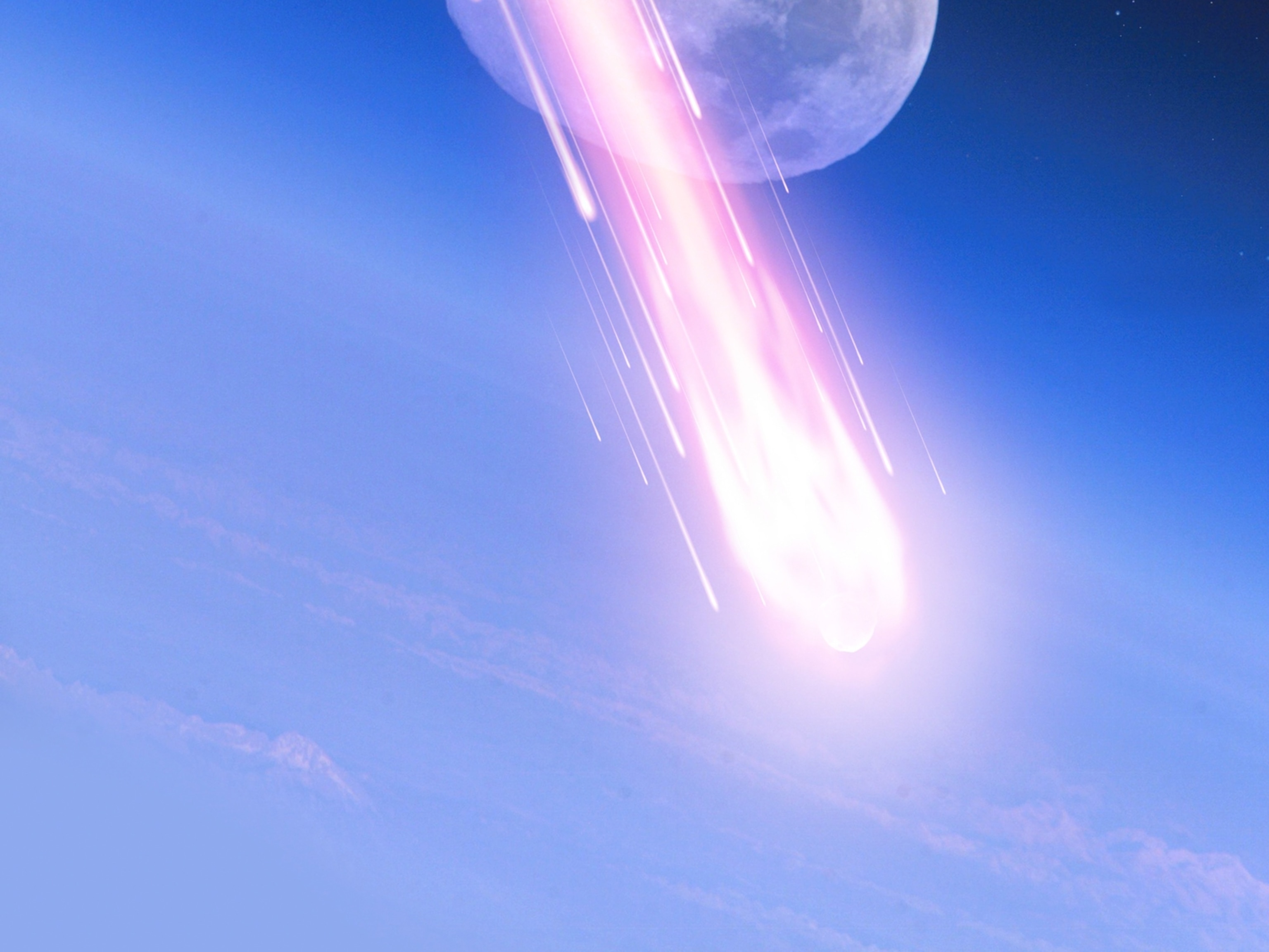Chelyabinsk Meteor: The Animated Movie
Researchers use an animation of the Chelyabinsk meteor strike to study how much energy it released into the atmosphere.
On February 15, 2013, a 60-foot (18-meter) wide chunk of rock streaked across the Russian sky at 42,500 miles per hour, breaking apart as it exploded with 500 kilotons of energy. (See "Russian Meteor's Air Blast Was One for the Record Books.")
Now, scientists have created the first computer-simulated animation of the most well-recorded meteor impact in human history—thanks to cell phones and the dashboard cameras common in Russian cars. (See "Pictures: Meteorite Hits Russia.")
The flash of light from the Chelyabinsk meteor was bright enough to burn skin, and the impact generated a shock wave that shattered windows, injuring more than a thousand people.
The damage cost tens of millions of dollars, which is comparable to a typical presidentially declared state of emergency, said Clark Chapman of the Southwest Research Institute in Boulder, Colorado, at a press conference during the American Geophysical Union (AGU) meeting in San Francisco this week.
Despite the damage, the meteor has been a trove of valuable information. Thanks to all the amateur video, scientists have an unprecedented amount of data they can use to learn about the meteor and to gauge the likelihood of a life-threatening impact in the future.
Peter Brown of the University of Western Ontario in Canada and his colleagues compiled amateur images and extracted data on how the brightness of the meteor varied over time.
From this so-called light curve, the researchers were able to calculate how much energy the fragmenting meteor released into the atmosphere as it tore through the sky.
Soon after the meteor struck, Mark Boslough of Sandia National Laboratories in Albuquerque, New Mexico, began working on a computer simulation of the impact.
Simulations allow researchers to validate their theoretical understanding of the meteor by comparing their computer models with real-world observations. These simulations take up a lot of computer power, so to speed things up, Boslough incorporated the energy data compiled by Brown's team instead of calculating them from scratch.
The result? High-resolution 3-D renderings that show what the meteor impact was like based on the data and scientists' understanding of its underlying physics.
The simulation generated still frames, which Boslough and Brad Carvey of Sandia stitched together to produce the video above. They presented the animation at the AGU meeting this week.
These kinds of animations are important for fully understanding the science of the meteor, Boslough said. "If you visualize it well, people can say: Oh, I get it. I understand it now."
What's needed now is a global network of telescopes that can detect meteors before they hit, he said. With earlier notice, scientists can then enlist more instruments and telescopes to study future impacts. (See "Russian Meteor a Surprise—But Many More Out There.")
Much attention has been paid to how well-documented the Chelyabinsk meteor was, he said. "But can you imagine how much better it would have been documented if we had a couple week's notice?"
With such an early-detection system in place, researchers could study smaller meteors that strike Earth's atmosphere but that often go unobserved.
Ultimately, Boslough said, researchers could come up with better risk estimates of life-threatening—or even civilization-threatening—impacts in the future. (See "Russian Meteorite Spotlights History's Other Crashes.")





